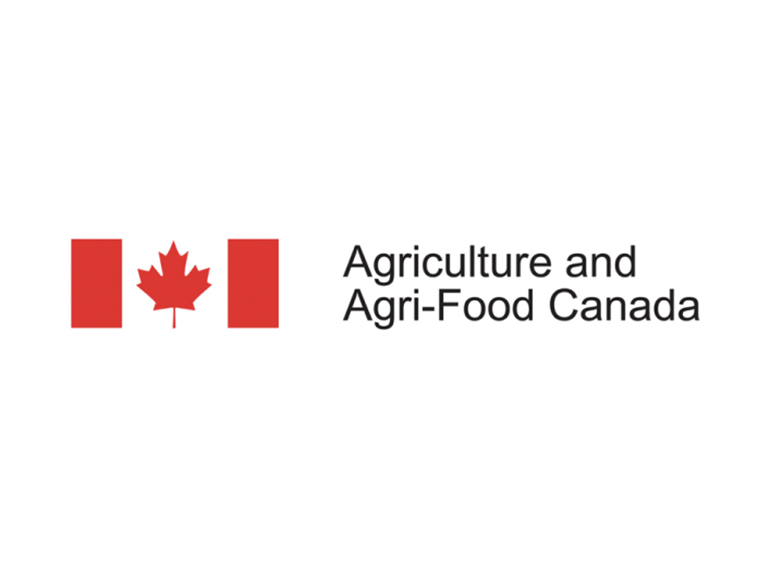
Minister MacDonald announces initial list of Livestock Tax Deferral regions for 2025
On August 18, 2025 the Honourable Heath MacDonald, Minister of Agriculture and Agri-Food, announced the initial list of regions that will qualify for the Livestock Tax Deferral in 2025.
The Livestock Tax Deferral provision allows livestock producers in prescribed areas, who are forced to sell all or part of their breeding herd due to drought, excess moisture or flooding, to defer a portion of their income from sales until the following tax year. The income may be at least partially offset by the cost of reacquiring breeding animals, thus reducing the tax burden associated with the original sale.
Buffer zones have been applied to capture impacted producers who are outside the boundaries of the prescribed regions but may be experiencing similar conditions. Weather, climate and production data from across Canada will continue to be monitored throughout the remainder of the season and regions will be added to the list when they meet the criteria.
Livestock Tax Deferral serves as an important instrument for farmers to mitigate the financial burden of drought, excess moisture or flooding. The Government of Canada will continue to work to ensure farmers receive timely information to support their herd management decisions.
Quotes
“As we continue to see the very real and challenging effects of climate change, Canada’s new government is committed to supporting our livestock producers. By offering a tax deferral option to those in affected areas, we are helping folks manage uncertainty, make informed business decisions, and safeguard their livelihoods.”
– The Honourable Heath MacDonald, Minister of Agriculture and Agri-Food
Quick facts
- To defer income under the Livestock Tax Deferral provision, the breeding herd must have been reduced by at least 15%.
- In the case of consecutive years of drought, excess moisture or flooding, producers may defer sales income to the first year in which the region is no longer prescribed.
- Subsequent regions will be added to the list when they meet the eligibility criteria of forage shortfalls of 50% or more caused by drought, excess moisture or flooding.
- Producers have access to a comprehensive suite of business risk management (BRM) programs to help them manage significant risks that threaten the viability of their farm and are beyond their capacity to manage. BRM programs, including AgriStability, AgriInsurance and AgriInvest, are the first line of defense for producers facing disasters and farmers are encouraged to make use of these programs to protect their farming operation.
- For the 2025 program year, the compensation rate for AgriStability will be increased from 80% to 90% and the maximum payment limit will be increased from $3 million to $6 million.
Associated links
– August 18, 2025 Agriculture and Agri-Food Canada media release
Prescribed Regions in Manitoba
Consolidated Census Subdivisions
Based on the 2021 Statistics Canada Census
- Alonsa 1
- Alexander 1
- Armstrong
- Bifrost-Riverton
- Coldwell 1
- Division No. 1, Unorganized 1
- Division No. 18, Unorganized, East Part
- Division No. 18, Unorganized, West Part 1
- Division No. 19, Unorganized
- Division No. 20, Unorganized, South Part
- Division No. 21, Unorganized
- Division No. 23, Unorganized 1
- Ethelbert 1
- Fisher
- Gimli
- Grahamdale
- Grandview 1
- Hillsburg-Roblin-Shell River1
- Lakeshore 1
- Minitonas-Bowsman
- Mountain (North)
- Mountain (South) 1
- Mossey River 1
- Rockwood 1
- Clements 1
- Andrews 1
- Laurent
- Swan Valley West
- West Interlake
- Woodlands 1
1 Buffered Designated Regions
Background Information
How the provision works
To defer income, the breeding herd must have been reduced by at least 15%.
- Where the breeding herd has been reduced by at least 15%, but less than 30%, 30% of income from net sales can be deferred.
- Where the breeding herd has been reduced by 30% or more, 90% of income from net sales can be deferred.
In a year in which a region has been prescribed, income from the sale of breeding livestock can be deferred to the next tax year when the income inclusion may be at least partially offset by the cost of reacquiring the breeding livestock. In the case of consecutive years of drought, excess moisture or flooding, farmers may defer this income to the first year in which the region is no longer prescribed.
What are the criteria to prescribe drought, excess moisture or flood regions?
Regions are prescribed on the advice of the Minister of Agriculture and Agri-Food to the Minister of Finance.
Beginning in 2024, the Government of Canada streamlined the process to identify prescribed regions earlier in the growing season, and also instituted a buffer zone to adjacent regions to capture impacted farmers on the edges of affected regions.
A preliminary list of prescribed drought, excess moisture or flood regions is now completed in the spring, for those regions where it appears that conditions indicate a potential forage shortage. This first list is based on preliminary weather and climate data gathered and analyzed under the Canadian Drought Monitor. AAFC continues to monitor weather, climate and production data throughout the growing season and will add regions to the list when they meet the eligibility criteria of forage yields being less than 50% of the long-term average due to drought, excess moisture or flooding.
A final list of prescribed drought, excess moisture or flood regions, including previously announced regions, is usually made in December when finalized forage yield information is available. However, once a region is prescribed, it is deemed eligible for the taxation year.
Also new for 2024 and moving forward, regions that are adjacent to regions that qualify based on weather, climate and production data will also be prescribed. This will ensure that farms within those adjacent regions that may also be experiencing drought, excess moisture or flooding can benefit from the Livestock Tax Deferral provision.



